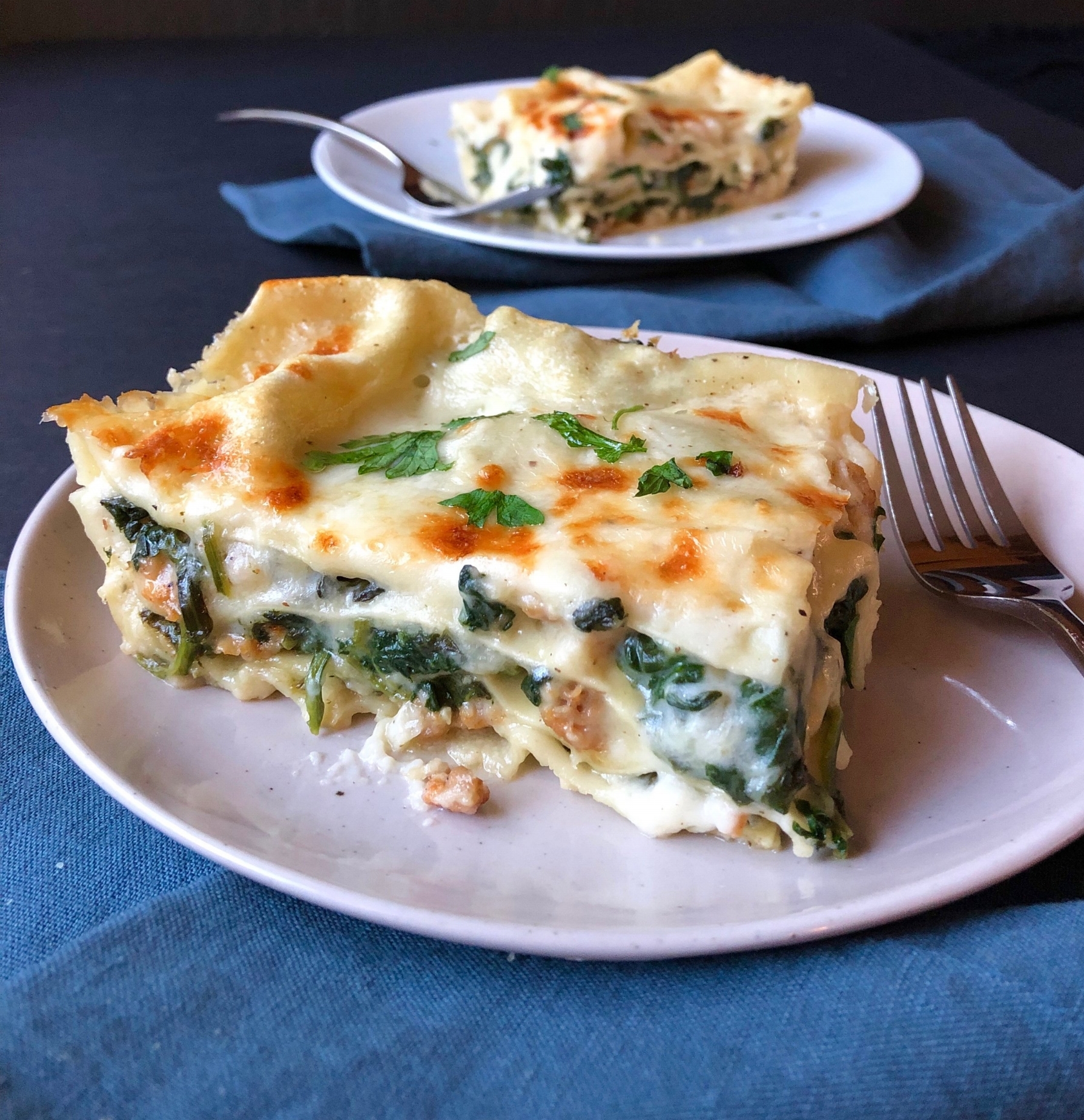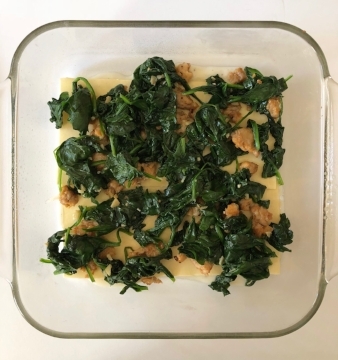Creamy Sausage and Spinach Lasagna
/I certainly love a good red-sauce lasagna—but a creamy white-sauce version? Oh yeah, I’ll take that any day. My Creamy Sausage and Spinach Lasagna is rich and indulgent–tasting, yet clocks in at fewer than 400 calories per serving. The sauce uses a combo of flour-thickened milk and chicken stock to keep things light, and chicken Italian sausage pulls its weight, flavor-wise, without loading on calories and fat. (Scroll below recipe card for photo step-by-steps on layering.) Hooray for lasagna night!
This lasagna does involve a little bit of prep: browning the sausage, wilting the spinach, making the sauce, and shredding the mozzarella (seriously, please shred it yourself from a block; it’ll melt smoother and be creamier). Before you start layering, gather all the components together:
And then rearrange them in order of the way you’ll layer them in the pan. Then spread 1/2 cup sauce in the bottom of the baking dish…
And top with two of the lasagna noodles.
Then sprinkle over one-third of the cooked sausage.
Top with one-third of the spinach.
And then 1/3 cup of the mozzarella.
Spread 1/2 cup sauce over all that.
Repeat those layers twice, and then top with 2 more noodles and the rest of the sauce.
And finish with the rest of the mozzarella cheese. Then cover the dish with foil and bake at 375°F for 40 minutes.
At that point, the lasagna will be done, but just a little pale. See?
But then pop it under the broiler for a few minutes (and top with parsley), and wow—hubba hubba!







































